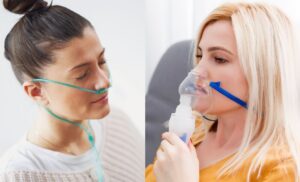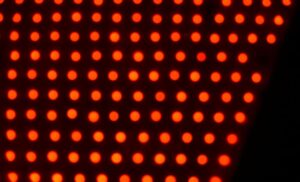Key Takeaways
Red Light Therapy penetrates deep to reduce inflammation, support muscle recovery, and promote skin rejuvenation.
Blue Light Therapy targets surface-level concerns, fighting acne, controlling oil, and supporting healthy sleep cycles.
Combining Both provides a comprehensive approach, addressing acne while boosting healing and anti-aging effects.
Consistency is Key: Regular sessions over time deliver the best results; overuse doesn’t speed them up.
Safety First: Always follow device guidelines, use protective eyewear, and choose FDA-cleared or dermatologist-approved devices like Hue Light.
Light therapy is gaining momentum across wellness, dermatology, and even sports medicine. Once limited to clinical settings, light-emitting diode (LED) devices are now widely available for home use, offering non-invasive, evidence-based solutions for improving skin health, managing pain, boosting energy, and supporting mental well-being through phototherapy, chromotherapy, and targeted light exposure..
Among the various types of light therapy, red light and blue light therapies are two of the most researched and commonly used. Although both rely on exposure to visible light, they differ significantly in their mechanisms of action, depth of penetration, and therapeutic effects.
In this blog, you’ll learn the key differences between red and blue light therapy, helping you make an informed decision based on your specific skincare or wellness goals.
Understanding Light Therapy Basics
Light therapy, also known as photobiomodulation (PBM), uses specific wavelengths of light to stimulate beneficial biological responses in the body. These responses may include cellular repair, tissue regeneration, antibacterial effects, and even hormonal balance.
There are several ways this therapeutic light can be delivered, including:
- LED panels
- Medical-grade lasers
- Light masks and handheld devices
Because it’s non-invasive, typically painless, and comes with minimal side effects, light therapy has become an appealing option for those seeking a natural, science-backed approach to healing and wellness.
Red Light Therapy: Overview and Mechanism
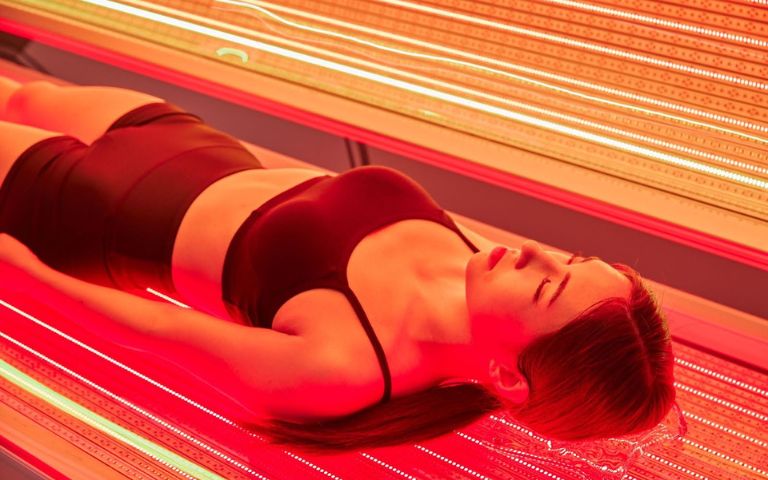
Red light therapy typically uses wavelengths in the 620–660 nanometer (nm) range, often paired with near-infrared (NIR) light (810–850 nm). These wavelengths can penetrate deep into the skin, muscle tissue, and even bones, making them highly effective for therapeutic purposes.
How It Works
- Red/NIR light penetrates cells and stimulates cytochrome c oxidase, a key enzyme in the mitochondrial respiratory chain.
- This enhances ATP (adenosine triphosphate) production—the energy currency of cells.
- The result is improved cellular function, reduced inflammation, and enhanced tissue repair.
Benefits of Red Light Therapy
- Skin rejuvenation: Reduces wrinkles, fine lines, and redness by boosting collagen synthesis.
- Pain and inflammation relief: Useful for conditions like arthritis, joint pain, and muscle recovery.
- Wound healing: Speeds up tissue regeneration and shortens healing time.
- Improved mitochondrial function: Supports energy production and cellular resilience.
- Brain and cognitive support: Emerging research suggests benefits in conditions like traumatic brain injury and dementia through transcranial PBM.
A 2017 study in Lasers in Medical Science found significant reductions in pain and inflammatory markers in osteoarthritis patients treated with red light therapy.
Side Effects of Red Light Therapy
Red light therapy is considered safe and non-invasive when applied correctly. However, minor side effects may occur, especially with overuse or individual sensitivity:
- Temporary Redness or Warmth – Mild flushing or warmth at the treatment site usually subsides within a few hours.
- Dry Skin or Tightness – Prolonged exposure may cause minor skin dryness or a tight feeling.
- Headache or Light Sensitivity – Especially if used near the eyes without protective eyewear.
- Skin Irritation (Rare) – In those with extremely sensitive skin or underlying dermatologic conditions.
Blue Light Therapy: Overview and Mechanism
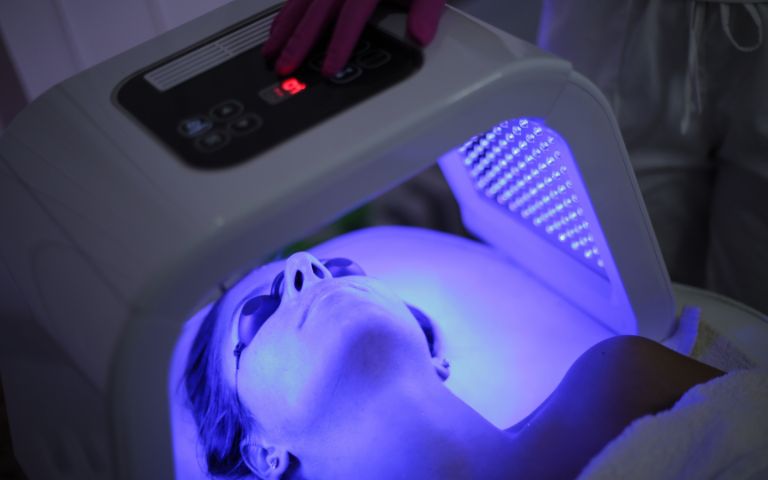
Blue light therapy utilizes wavelengths between 405–470 nm, which penetrate the epidermis, the outermost layer of the skin. Its primary mechanism is antimicrobial, making it especially effective against Propionibacterium acnes (P. acnes), a key contributor to acne. Additionally, it helps regulate sebum production and reduce inflammation, making it well-suited for treating surface-level skin issues.
How it works:
- Blue light has antimicrobial properties, particularly effective against Propionibacterium acnes (P. acnes), the bacteria that contribute to acne.
- It can also help regulate sebaceous (oil) gland activity, making it ideal for oily skin types.
- Morning exposure to blue light may help reset circadian rhythms, improving sleep-wake cycles.
Benefits of Blue Light Therapy
- Acne reduction: Kills acne-causing bacteria and minimizes outbreaks.
- Sebum regulation: Helps control oily skin and reduce clogged pores.
- Anti-inflammatory effects: Useful for mild inflammatory skin issues.
- Dermatological conditions: Sometimes used under medical supervision to manage eczema, psoriasis, and actinic keratosis.
- Sleep-wake support: Blue light boxes are used for seasonal affective disorder (SAD) and circadian rhythm disorders.
A 2021 systematic review in Sensors (Basel) found that blue light therapy led to significant reductions in acne lesion counts, with studies reporting at least a 40% reduction in inflammatory acne lesions after 6 weeks of treatment, and continued improvement up to 12 weeks compared to controls.
Side Effects of Blue Light Therapy
Blue light therapy is most effective for surface-level skin issues like acne, but requires caution due to its higher energy output and shallow skin penetration. Common side effects include:
- Dryness or Flakiness – Blue light can dry out skin, especially when used daily.
- Mild Skin Irritation – Redness, stinging, or slight burning may occur, particularly on sensitive or broken skin.
- Increased Sun Sensitivity – May temporarily increase photosensitivity, making sunscreen important during treatment cycles.
- Eye Strain or Fatigue – Exposure without eye protection can lead to discomfort or temporary vision blurring.
- Hyperpigmentation (Rare) – In darker skin tones, overuse might trigger post-inflammatory hyperpigmentation.
Side-by-Side Comparison: Red vs. Blue Light Therapy
| Aspect | Red Light Therapy | Blue Light Therapy |
| Wavelength | 620–850 nm | 405–470 nm |
| Penetration Depth | Deep (dermis, muscle, joints) | Shallow (epidermis) |
| Main Action | Boosts ATP, reduces inflammation, heals tissue | Antibacterial, regulates sebum, reduces acne |
| Best For | Pain relief, anti-aging, wound healing, fatigue | Acne, oily skin, surface-level inflammation |
| Session Duration | 10–20 minutes | 5–15 minutes |
| Safety Concerns | Minimal; avoid eye exposure | May cause dryness or irritation with overuse |
Which One Should You Use?
Choose Red Light Therapy If You Want To:
- Reduce inflammation and joint pain
- Enhance muscle recovery after workouts
- Promote wound and scar healing
- Combat skin aging and boost collagen
- Improve mental clarity and energy levels
For users seeking a professional-grade red light therapy experience, the Hue Light system offers customizable treatment settings ideal for muscle recovery, skin rejuvenation, and cognitive support, all from the comfort of home or clinical use.
Choose Blue Light Therapy If You Want To:
- Treat acne or bacterial breakouts
- Control oily skin
- Reduce mild eczema or dermatitis
- Support your circadian rhythm (e.g., for jet lag or seasonal depression)
- Address skin infections (consult with a dermatologist)
Can You Combine Red and Blue Light Therapy?
Yes, combining red and blue light therapy is not only possible but often highly effective. Many modern devices offer dual-wavelength systems, delivering both blue and red light therapy in a single session.
Why Combine?
- Synergistic skin treatment: Blue light kills acne-causing bacteria, while red light reduces the inflammation and promotes skin repair.
- Faster acne recovery: Reduces both the severity and the duration of breakouts.
- Comprehensive care: Great for individuals with acne-prone skin that also shows signs of aging.
Look for FDA-cleared dual-LED masks or panels for optimal safety and effectiveness.
Safety and Usage Guidelines
While light therapy is generally safe, following best practices ensures maximum benefit and minimal risk:
- Use protective goggles, especially with blue light (it can be harsh on the eyes).
- Stick to recommended session times—overuse doesn’t increase effectiveness and may irritate skin.
- Start slow and increase gradually based on skin response.
- Consult your doctor if you’re on medications (e.g., retinoids, antibiotics) or have photosensitive conditions.
- Clean your devices regularly to avoid bacterial buildup.
Red, Blue, or Both? Find Your Ideal Therapy
Red and blue light therapies offer powerful, evidence-based solutions for a variety of health and skincare concerns. Red light therapy excels in deep tissue repair, pain relief, and anti-aging, making it ideal for those seeking holistic wellness or recovery. Blue light therapy shines in treating acne, controlling oil production, and supporting circadian rhythm health. For those with complex needs, combining both therapies can provide a synergistic approach, particularly for acne-prone skin.
Ultimately, the best choice depends on your goals—whether it’s rejuvenating aging skin, healing injuries, or banishing breakouts. By understanding their mechanisms and benefits, you can confidently integrate red, blue, or combined light therapy into your routine. Always prioritise safety, start with professional or device-specific guidance, and enjoy the glow of healthier skin and improved well-being!
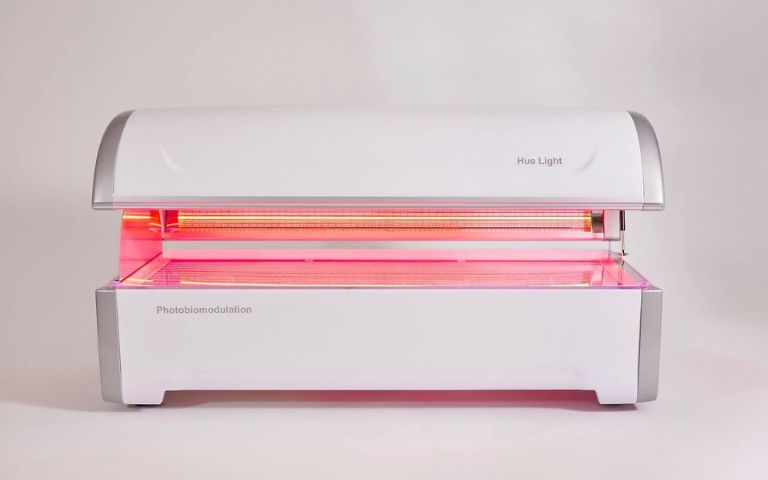
For an advanced red light therapy option, consider using a dedicated device like the Hue Light photobiomodulation therapy machine, designed to bring clinical-grade healing to your everyday routine.
- Boost mitochondrial function and ATP production
- Accelerate healing and reduce inflammation
- Promote skin and cognitive health
With precision engineering and easy-to-use settings, Hue Light helps you experience the full benefits of red light therapy safely and effectively.
Contact us today for a free consultation!

